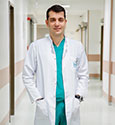It has been known for generations that something that occurs with sexual activity causes cervical cancer in women. At least back in the 1960’s Catholic nuns would tell their female students that no virgin nun had ever been diagnosed with cervical cancer. (They also told their students if they received a blow to the breasts, they would develop breast cancer.) Perhaps the scientific community took this knowledge as an old nun’s tale as versus an old wives’ tale.
But someone, somewhere, got the message. During the 50’s and 60’s scientists conducted research between the cancer groups and the non-cancer groups and found one big difference. Those who has no sexual experience had no cervical cancer. They also discovered that many of the women who did have cancer also had genital warts.
To explain the human papillomavirus would take a course in chemistry. It may have been with us since the evolution of man (and woman). HPV is a small DNA virus with a genome of approximately 8000 base pairs. That’s all we’ll say about chemistry. Researchers say there are over 100 different variations of HPV. Some cause symptoms while others do not. Some can cause cancer while others are benign. It is estimated that nearly 99% of all sexually active individuals will come in connect with HPV sometime in their lives.
Jumping further ahead, it was known in the agricultural community that that there was a bovine papilloma virus that caused tumors in cows. Thus they came up with a bovine vaccine that prevented cancer in cows. It took a while, but scientists said if it worked for cows why couldn’t it work for humans? And so the human version was born.
Mothers were encouraged to get their young daughters immunized. It was better if the girl received the vaccine before she ever became sexually active. Young women up to the age of 26 can receive the vaccine but it is best to begin between the ages of 11-12.
Then people began to wonder why this virus doesn’t affect men. It does. Men do not have a cervix but they do contract cancer of the penis, anal cancer, cancer at the back of the throat (from oral sex) and genital warts.
So now it is suggested that males receive the vaccine. The ideal age to begin treatment is 11-12 years of age and complete treatment by age 21. There are some exceptions. Men with HIV and men who have sex with men can get immunized up to the age of 26.
According to the Centers for Disease Control and Prevention (CDC) “Condom effectiveness for STD and HIV prevention has been demonstrated by both laboratory and epidemiologic studies. Evidence of condom effectiveness is also based on theoretical and empirical data regarding the transmission of different STDs, the physical properties of condoms, and the anatomic coverage or protection provided by condoms. Laboratory studies have shown that latex condoms provide an effective barrier against even the smallest STD pathogens.” For sexually active women who have had more than one partner, use of a condom can protect against HPV if the woman has not already been exposed to it. It can also protect an uninfected man. It is important to remember that the virus can be passed via oral sex as well. In these instances a dental dam will provide protection.


